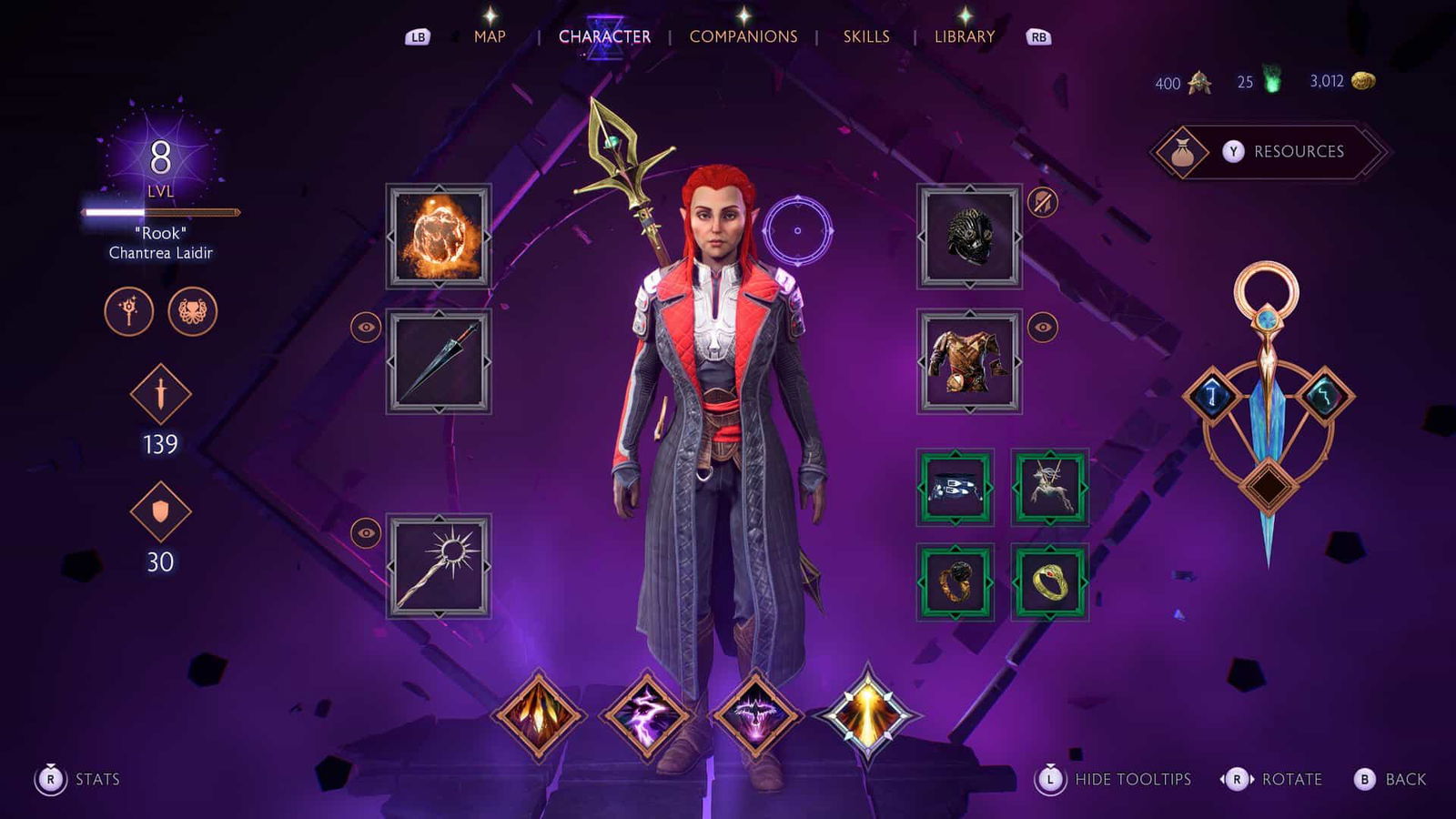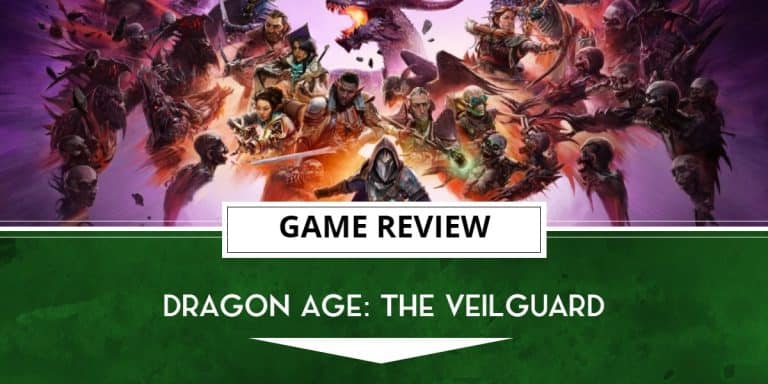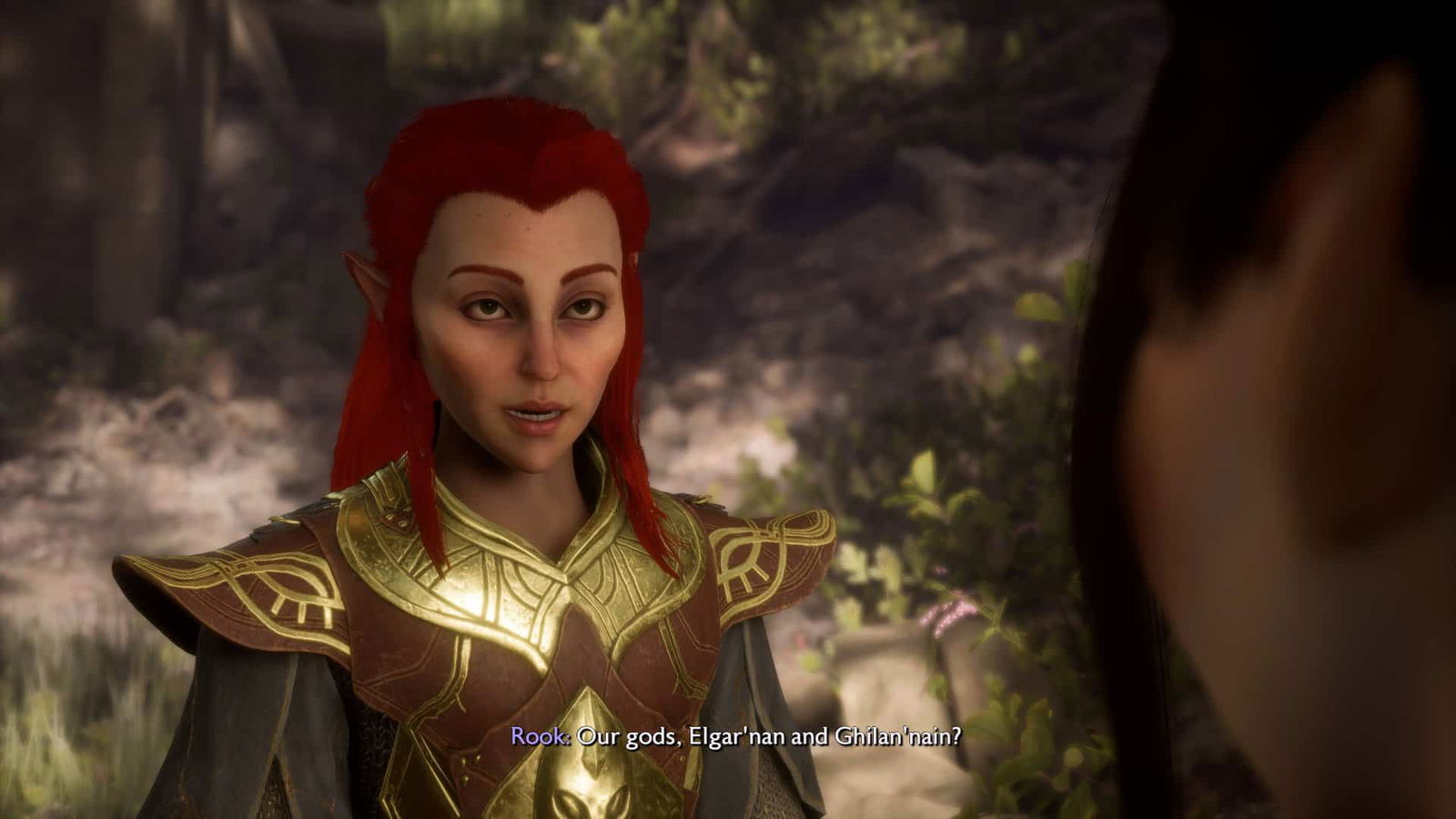Discovering Dragon Age: Origins on the Xbox 360 was an adventure of a summer. I made six characters and completed the game at least three times. I have played all the Dragon Age games several times and spent hundreds of hours diving into Thedas. When Dragon Age 4 was announced, I was hyped. I was so excited to learn more about Solas’ heel turn at the end of Dragon Age: Inquisition and why he did what he did.
Game Name: Dragon Age: The Veilguard
Platform(s): PS5, Xbox Series X|S, PC (Reviewed)
Developer(s): Bioware
Publisher(s): Electronic Arts
Release Date: October 31st, 2024
Price: $59.99
Dragon Age: The Veilguard takes place as Varric hires your character, Rook, for a special job. That job: stopping Solas from performing a ritual that would harm the Veil. The Veil is the barrier between the Fade, or the spiritual world, and the physical world. After successfully disrupting the ritual, you have sealed Solas in the Fade and released two of the elven gods who were initially trapped in it. Varric is unable to lead the next mission, so he gives Rook the leader role. It is now up to you to save the world from the elven gods.
Traversing Thedas
The gameplay loop in Dragon Age: The Veilguard is simple. Thanks to interrupting the ritual, your party is shot through to a part of the Veil that houses Solas’ collection of eluvian mirrors. It is called the Lighthouse, and it oversees the Crossroads. The Crossroads houses Eluvian mirrors that allow your team to move quickly through Thedas. Each mirror takes you to a different town or location in Thedas. You find out the next step your team agrees to through conversations. Sometimes, you have a choice in what the next step is, and it can have consequences.
Combat is streamlined in Dragon Age: The Veilguard, but it makes for an enjoyable experience. You can choose between three classes in the game: Warrior, Rogue, or Mage. Each class has three specializations you can choose once you hit level 20. Warriors get up close and personal with close-range weaponry. Rogues have speed with daggers, or you can use them as a long-range bow character. Mages have staves that unleash magical abilities, or you can use magical daggers to attack enemies at a closer range. For my playthrough, I became a Mage and specialized in magical daggers.
Mages use mana to unleash elemental abilities. With my specialization, I gained an ability that lets me use my dagger to rip open the void and unleash devastating electrical damage. You have access to three abilities, an ultimate ability, and the ability to activate your rune. You can equip three runes onto your character, and when you activate your rune, all three active abilities commence. It removes whatever passive abilities your runes have for the time it is active, but usually, active runes have stronger offensive or defensive capabilities.

I have heard many opinions that Dragon Age: The Veilguard is a good game but not a good Dragon Age game, and I had to ask myself: what is a good Dragon Age game? It takes place in Thedas, the companions all have real depth, and choices have consequences. I think that covers the parts that matter to a Dragon Age experience. So I disagree with the argument that this isn’t a good Dragon Age game. Dragon Age: Origins is the bar that all Dragon Age games try to reach, and I do think none of them have reached that bar. Dragon Age 2 lacked a lot of the depth of Origins. Inquisition had too big of a scope, which made the early maps feel way too big and overwhelming.
That said, I think Dragon Age: The Veilguard is a closer balance between Dragon Age 2 and Dragon Age: Inquisition. The scope of the maps is more manageable, and the action combat is a bigger focus, like in Dragon Age 2.
Dragon Age is a series that I feel doesn’t have a set formula, but it does have a set world and lore. Dragon Age: The Veilguard explains the lore so that it can, at times, change it. Honestly, at first, I was skeptical about how things were being revealed, but once the reveals hit about the Blight and the connection Solas has to almost everything from previous games, it was done expertly. It also made me want to replay Dragon Age: Inquisition and Dragon Age: Origins again with that fresh perspective. A lot of the Fade, the Veil, and the so-called gods of the world get explained, and questions I never thought about are answered. If you are someone who has kept up with the series and is interested in its backdrop, this game will scratch that itch.
Creating The Veilguard
Dragon Age: The Veilguard removes a lot of the realism effects that the first two games were trying to go for, and honestly, I think it will age better for it. We live in an era of video games that strive to push more grounded colors, realistic animations, and faces. It makes games currently look amazing. However, if you go back even five years, after seeing the more realistic graphics of today, you start noticing more of the compromises studios took to achieve those visuals. In turn, it creates a more aged product. Games that use a creative touch to make them more stylized, though, age much better. Look at Persona 5, for example. Created for the PS3 and upscaled for current consoles, this game still boasts some amazing visual designs.
Now look at Dragon Age: Origins from that same generation. The faces and body motions do not age gracefully. While it does make other characters, like Morrigan or Dorian from the later Dragon Age games, look uncanny, it helps those characters match this style of art design.
I played this game primarily on PC since the Steam Deck has a lot of visual compromises to get it running fluently. I used my PC initially with an NVIDIA RTX 3060 graphics card but moved over to my laptop because it had more RAM. My 16 GB of RAM would randomly cause crashes. While it would still hit high frames, if it stuttered even slightly, it would make the entire game close. Once I moved to my laptop, which has a similar laptop NVIDIA RTX 3060 graphics card but 24 GB of RAM, it ran much better. I would hit 60 FPS consistently at High settings with all the visual effects turned on. It looked beautiful. Locales such as the forests and towns looked amazing!
That said, I was the second choice for the review of this game because the game would constantly crash for the first reviewer. There are many weird tech issues this game has. I got soft-locked on a quest because a door was opened that shouldn’t have been. The camera would not always follow my opponent if I was locked on, and if I tried to move it with the right analog stick, it would instead lock on to a different enemy entirely, forcing me to turn off the lock-on and control the camera manually.
Speaking of tech issues… it’s Jordan here, the original reviewer of this game. I have to jump in here to discuss my experience with Dragon Age: The Veilguard. As Scott mentioned, on PC while playing through Steam, the game would nearly constantly crash for me. What he didn’t mention, however, was that before encountering this issue, I had managed to play around 25 hours of the game without even a hiccup. Unfortunately, my save corrupted and wasn’t backed up. So, in trying to fix the issue of losing my save, I had to uninstall the game completely. It was after reinstalling that the constant crashes started, occurring roughly every hour.
That being said, I enjoyed what I was able to play. Something that stood out to me in particular was the unique visual style for a video game. Characters have a semi-realistic, almost Pixar-style look. The music had some very impactful moments, and the gameplay was smooth, although I found combat to be a little repetitive once I discovered the skills that I liked. Now back to Scott to tell you more about his experience with the game.

My time with Dragon Age: The Veilguard has been mixed. The first half of the game starts slow, frequently reiterating the same plot points. However, once you reach the first major decision, the story takes a significant leap into the rich world of Thedas, offering a variety of quests that focus on your companions. Some of these questlines are truly outstanding, like Emmrich’s, while others, like Harding’s, delve into the lore of previous games. The questlines are incredibly engaging, pulling you deeper into the world of Thedas as you uncover more of its mysteries.
That said, the game has its frustrations, particularly with technical issues during combat. For example, dodging a boss’s attack only to get killed by a follow-up you didn’t see because the camera failed to stay locked on, even when it was supposed to be, can be infuriating. Additionally, remnants of the game’s live-service roots are still evident. Resource gathering, building reputations with shopkeepers, and the paltry gold rewards in many areas can make the game feel unnecessarily grindy. This grind is especially noticeable when collecting mementos to upgrade the lighthouse to its maximum level, which can feel tedious.
Despite these issues, I believe the positives outweigh the negatives. The maps are large but not overwhelming, and the companions are heartfelt and authentic. Solas’s connection to the story builds a deep sense of history within Thedas, enriching the series’ lore in meaningful ways. For those seeking a Dragon Age experience reminiscent of earlier entries, this game retains the charm and love for the world that fans cherish.
Dragon Age: The Veilguard is available for the PS5/PS5 Pro, Xbox Series X|S, and PC.
Review Disclosure Statement: Dragon Age: The Veilguard was provided to us by Electronic Arts for review purposes. For more information on how we review video games and other media/technology, please review our Review Guideline/Scoring Policy.
Affiliate Link Disclosure: One or more of the links above contain affiliate links, which means at no additional cost to you, we may receive a commission should you click through and purchase the item.
Summary
Dragon Age: The Veilguard stands on the shoulders of Titans with the previous Dragon Age series and even though the beginning feels a bit clumsy, the game itself delivers in spades.
Pros
- Beautiful visuals
- Well-written Companions
- Combat is fun and flashy
- It fits in the overall lore of Dragon Age well
Cons
- Technical problems
- The beginning is a slog
- a cumbersome grind due to reworked live-service elements




